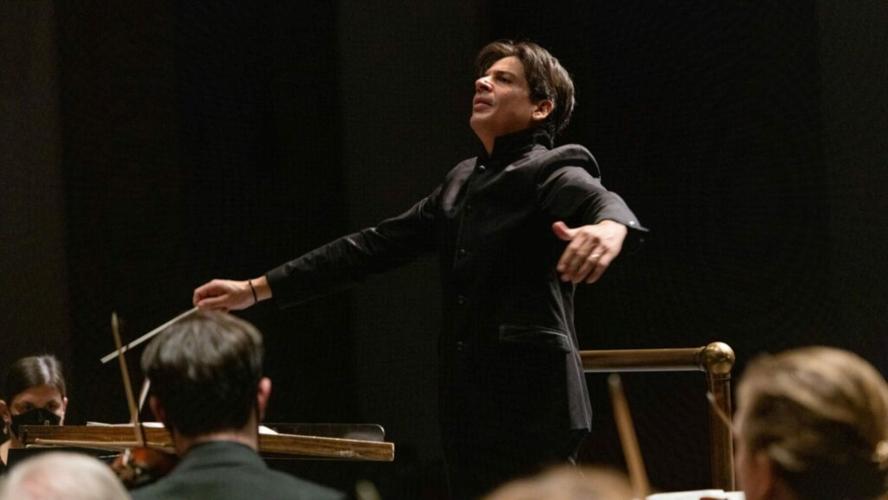If your definition of Beethoven’s Fifth Symphony begins and ends with the famous “fate knocking” motif, you’re not alone.
And you’re not wrong.
Those ubiquitous four notes — quick bursts of da, da, da followed by a longer duuum — are the throughline that connects the dots.
They are the adrenaline rush in the intro and the musical genius of all that lies between the beginning and ending, with the motif being unabashedly and subtly reintroduced in each of the four movements.
In the first of two performances at Linda Ronstadt Music Hall on Friday, Nov. 15, Tucson Symphony Orchestra Music Director José Luis Gomez emphasized the motif in the fast-paced passages from the strings, led by guest Concertmaster Mika Gregg, and in the muscular interruptions from the brass and percussion. In the powerful blasts from principal trumpet Hayato Tanaka, Gomez delivered an exclamation point.
But Gomez also showed us the subtlety of Beethoven, how the 19th century German composer wove that motif in varied pitches in the flute’s solo line or the quiet pizzicato string passages in the third movement.
Gomez summoned from his players Beethoven’s powerful melodies and rhythms that culminated in principal timpanist Alana Wiesing leading a thunderous torrent in the march-like finale, joined by frenetic strings and woodwinds that added their voices, higher and louder. It was reminiscent of the military marches we heard earlier in the week when the country celebrated Veterans Day.
The audience barely waited for those final notes to dissipate before giving Gomez and the orchestra thunderous applause,
Gomez opened Friday’s concert with Beethoven’s “Leonore” Overture No. 3, one of four overtures he composed for his lone opera “Fidelio.”
The highlight of the piece, which the orchestra played with a balance of energetic drama and soaring melody, was hearing the clarion call of Tanaka’s trumpet played from the balcony.
In the concert’s second half, the orchestra performed Bela Bartók’s Concerto for Orchestra, a daunting piece that cast nearly every instrument as soloist.
Most concertos are written for a single solo instrument; Bartók assigned roles for several, from Tanaka’s trumpet and Alexander Lipay’s flute, to the second movement’s “Game of Pairs” — couples of harps, oboes, clarinets, flutes and trumpets among them. Gomez in his introduction to the piece noted that the bassoon couple, Benjamin Yingst and Jessica Campbell, are a couple in real life, a point they acknowledged during the applause when they stood and kissed.
While Beethoven’s Fifth was the cornerstone of Friday’s concert, the Bartók provided the heart-racing excitement of the evening. Sitting in the audience, it was hard not to scan the orchestra to find Lipay playing that singular flute line following the somber string introduction or to see Tanaka’s head bob from his place behind the strings when it was the trumpet’s turn before focusing our attention on Darrio Brignoli’s soaring clarinet line.
The solo parts overlap and leapfrog one another, with horns tossing the theme to the trumpets and the trumpets turning it over to the strings. You could see principal harp Benjamin Albertson’s hands glide over his behemoth instrument coaxing the sublime harp phrase before the spotlight refocused back to the horns, then back to the trumpets and over to the flutes before landing in the strings.
Through it all, Gomez had a daunting task to keep all those moving parts from colliding, which might have been the most exciting thing to watch.
The concert repeats at 2 p.m. Sunday, Nov. 17, at Music Hall, 260 S. Church Ave. For tickets, visit tucsonsymphony.org.





